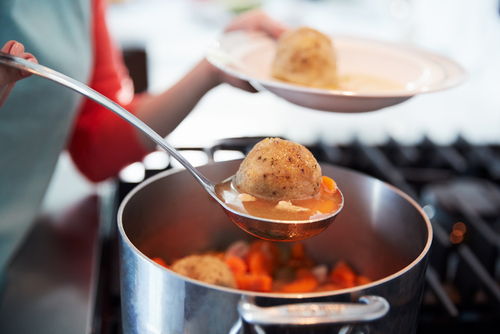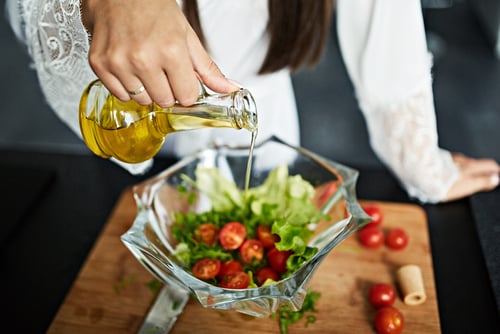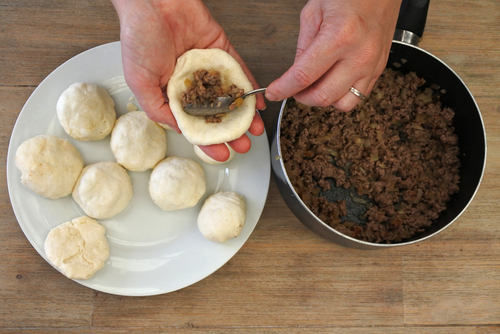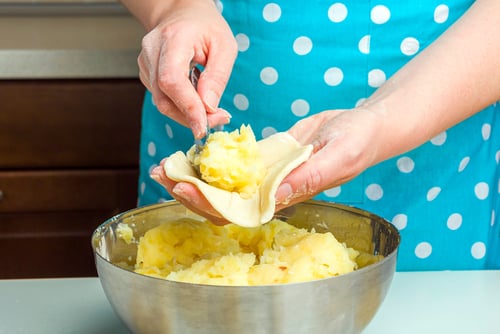Did you ever notice how food changes during a meal?
Before the meal, you have fresh, yummy food your family can’t wait to eat.
After the meal, all you’ve got is leftovers.
And while you may like some leftovers for a weeknight supper, too much will clutter your fridge and go to waste.
Of course, the key is to cook the right amount of food for your family and company. Easier said than done. How can we overcome our Jewish-parent instinct to overcook?
It doesn’t have to be a guessing game. Here’s how you can get it right for Yom Tov this year.

MISASSUMPTIONS
First, let’s clear up some common misassumptions.
1. Your family won’t eat (much) more food on Yom Tov than on a regular Shabbat. Really.
Yes, if there’s a special dish that you only serve once a year, they may eat a lot of it. But, overall, you may need LESS food on Yom Tov than Shabbat. Why?
- If your regular Shabbat menu allows for leftovers, and you cook the same amount for two days of Yom Tov, you will have double the leftovers! Practically speaking, that means if leftovers usually last for two days, after Yom Tov, you’ll have four days of leftovers. Will anyone want to eat that food four days later?
- As Yom Tov goes on, with two large meals a day, people’s appetites shrink.
2. Every food counts. Challah counts. Dips count. Appetizers count. High-calorie drinks count. The more “extras” you add to your table, the less gets eaten of other foods.
So, keeping those thoughts in mind, how do you know how much food to make?

LOGIC METHOD
This method works well if you’re having more or less the same amount of people as a regular Shabbat.
Start by recording how much food you make for Shabbat. That will be your baseline.
For example, your regular Shabbat might include:
- Challah
- Appetizer
- 1 Protein in a 9×13 pan
- 2 Sides in 9×9 pans
- 1 salad
Use that as a framework or outline for your Yom Tov meal. Plug in foods to each category on your menu. You may want even to make a little bit less, as we mentioned above.
If you have extra company, then you do need to cook more. You can either. . .
. . . increase the quantities of each dish
OR
. . . add more dishes.
But you don’t need to do both!

MATH METHOD
If you have a much larger crowd, then you might want to do the math. Here goes:
-According to Feeding America, an average meal is 1.2 pounds of food per person.
–Calculate-this.com says that 1.25 pounds of food at a meal is approximately:
- 1 serving of protein (6 ounces, about the size of a fist)1 vegetable side (3.5 ounces, a little less than half a cup)
- 1 starch side (3.5 ounces)
- 1 salad (2 ounces – equals one cup of shredded lettuce)
- Bread or rolls (2 ounces, size of two dinner rolls)
- 1 dessert (3.5 ounces)
With that info in mind, multiply by the number of people at your table.
You can customize those guidelines to your tastes without losing the boundaries. For example, if your family LOVES challah and dips, they’ll need less of other foods. So maybe you want to play with the categories to suit your family’s tastes.
Or maybe you want some leftovers for chol hamoed, so you’ll increase the amounts.
Or maybe, as a hostess, you want the food to look more generous than “exactly enough.” You can add amounts but use this as a starting point to keep the food manageable and reasonable.

KNOW YOUR FAMILY
Keep in mind that not every person is created equal. No one eats exactly 3.5 ounces of a veggie side and 2 ounces of salad!
- Men generally eat more than women.
- Family eat more than guests. (Really! Test it out.)
- Small children may count as only 1/3 of an adult when calculating food amounts.
- Teenage girls often eat more veggies and less carb-y sides.
- Boy families will go heavier on the meat and carbs. In general, watching a teenage boy inhale food can be an awe-inspiring experience. If he really likes a certain food, you can count him as two people. Or maybe three.
We all want to make Yom Tov food special for our families. Within these guidelines, we can do it by serving seasonal or favorite foods but WITHOUT uncontrolled excess and waste.





